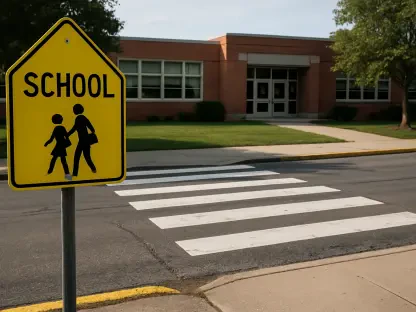As the United States navigates an evolving economic landscape, a staggering projection has emerged that could reshape the nation’s workforce over the next several years, highlighting a critical challenge on the horizon. By 2032, a shortfall of 5.3 million college-educated workers is anticipated, driven by a combination of retiring professionals, insufficient new entrants with the necessary qualifications, and the creation of nearly 700,000 new jobs requiring postsecondary education. This gap, with 4.5 million positions needing at least a bachelor’s degree, poses a significant challenge to key industries and the broader economy. Fields such as nursing, teaching, and engineering are expected to face acute shortages, threatening the stability of healthcare, education, and innovation. This looming crisis demands urgent attention to educational systems and workforce strategies to prevent long-term setbacks in national competitiveness and societal well-being.
Addressing the Workforce Gap
Critical Occupational Shortages
The projected deficit of college-educated workers by 2032 reveals alarming shortages in specific occupations that are vital to the nation’s infrastructure. Nursing, for instance, is expected to face a gap of 362,000 nurse practitioners and registered nurses, alongside 42,000 licensed practical nurses. This shortfall is intensified by high turnover rates, a lingering effect of pandemic-era burnout, and a scarcity of faculty in training programs due to uncompetitive salaries. Similarly, the teaching profession is bracing for a deficit of 611,000 educators, driven by similar issues of exhaustion and attrition. These gaps in healthcare and education signal a potential crisis in delivering essential services, highlighting the need for immediate interventions to bolster training pipelines and improve working conditions to retain talent in these critical sectors.
Beyond nursing and teaching, other industries are not immune to the looming workforce crisis. Engineering, a cornerstone of technological advancement, faces a projected shortage of 210,000 professionals, compounded by restrictive immigration policies that limit the influx of skilled foreign workers. Additionally, sectors like accounting, law, construction, medicine, management, and even trucking are expected to experience significant deficits. Each of these fields plays a pivotal role in economic stability, and the inability to fill these roles could hinder growth and innovation. Addressing these diverse shortages requires tailored strategies, from policy adjustments to incentivize skilled immigration to targeted educational programs that prepare students for high-demand careers.
Strategies for Mitigation
Tackling a workforce gap of this magnitude necessitates a multifaceted approach that engages both public and private sectors. One promising avenue is the expansion of visa programs to attract immigrants with specialized skills, particularly in technical fields like engineering where domestic talent alone cannot meet demand. Such policy changes could provide a critical influx of qualified professionals to bridge immediate gaps. Additionally, employers are encouraged to invest in reskilling initiatives, focusing on skills-based hiring practices that allow workers to transition into high-demand roles. This approach not only addresses shortages but also fosters a more adaptable workforce capable of meeting evolving industry needs over the coming years.
Another key strategy lies in substantial investment in postsecondary education to ensure broader access and higher attainment rates. Adapting teaching and counseling methods to reflect the changing socioeconomic and racial/ethnic demographics of students is equally vital. With the youth population increasingly becoming majority-minority, inclusive educational approaches are essential to provide equitable opportunities. Experts emphasize that without such investments and adaptive strategies, the nation risks falling behind in global competitiveness. Enhancing educational infrastructure and support systems can empower underrepresented communities, turning this crisis into an opportunity for economic advancement through targeted training and education.
Future Implications and Solutions
Demographic Shifts and Educational Needs
The workforce shortfall projected by 2032 is deeply intertwined with broader demographic trends that are reshaping the fabric of American society. As the youth population transitions to a majority-minority composition, educational systems must evolve to meet diverse needs and ensure equitable access to opportunities. This shift demands innovative teaching strategies and counseling that address cultural and socioeconomic differences, preparing students for a rapidly changing job market. Experts argue that failing to adapt risks widening existing disparities, leaving many potential workers unprepared for the high-skill roles that will dominate future employment landscapes. Strengthening educational frameworks now is crucial to building a resilient workforce over the next decade.
Investment in education must go beyond adaptation to include significant funding to expand capacity and resources. Postsecondary institutions need support to train more students in critical fields like nursing, teaching, and engineering, where shortages are most acute. This includes addressing barriers such as faculty shortages and uncompetitive salaries that deter talent from entering training roles. By prioritizing these areas, policymakers can help close the gap of 5.3 million college-educated workers, ensuring that the economy remains robust. The focus should be on creating pathways for marginalized and low-income communities, transforming this challenge into a catalyst for social and economic equity.
Building a Sustainable Workforce
Looking back, the response to the projected workforce shortfall of 5.3 million college-educated workers by 2032 prompted a reevaluation of national priorities. Discussions centered on actionable solutions that could have reshaped the trajectory of key industries. Expanding visa programs to welcome skilled immigrants emerged as a practical step to alleviate immediate shortages in technical fields. Meanwhile, employer-led reskilling programs gained traction as a way to prepare existing workers for new roles, reflecting a shift toward flexible hiring practices. These measures aimed to stabilize sectors like engineering and healthcare, which faced significant gaps.
Reflecting on past efforts, increased investment in postsecondary education stood out as a cornerstone for long-term success. Tailoring educational strategies to diverse student demographics was recognized as essential to closing opportunity gaps. Moving forward, continued collaboration between policymakers, educators, and industry leaders remains vital to sustain progress. Emphasizing accessible training and innovative policies can ensure that future generations are equipped to meet evolving demands, safeguarding economic stability and fostering inclusive growth.









